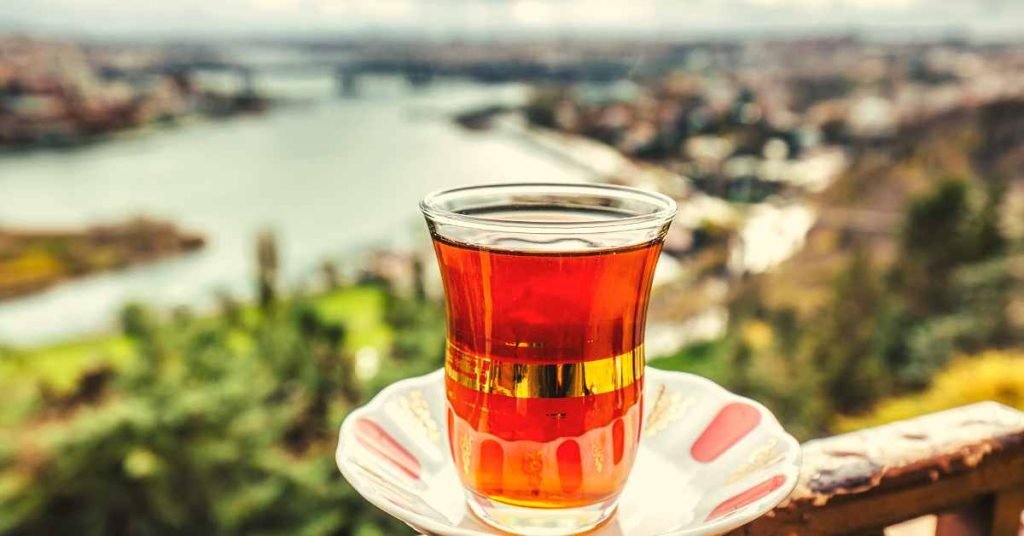For many of us, tea is an essential part of our daily routine. Whether we enjoy a hot cup of tea to start our day or relax with a soothing cup in the evening, it is hard to imagine life without this beloved beverage. But have you ever wondered how tea came to be?
The story of tea is one of chance discoveries, cultural exchange, and global commerce. It’s a tale that spans thousands of years and encompasses a variety of cultures and traditions.
Join us on a journey through time as we explore the fascinating history of tea and how it became the ubiquitous beverage we know and love today.
When Was Tea Discovered for the First Time?

The discovery of tea is shrouded in legends and myths, and it is difficult to pin down the exact origins of the beverage. However, it is generally believed that tea was first discovered in China over 5,000 years ago.
According to one legend, the discovery of tea is attributed to the Chinese emperor Shennong, or the “Divine Farmer.” As the story goes, one day, while the emperor was boiling water, a few leaves from a nearby plant were suddenly blown into the pot.
The emperor was intrigued by the resulting aroma and flavor of the beverage, and thus, tea was born.
Another popular legend credits the discovery of tea to a Buddhist monk named Bodhidharma. Bodhidharma, the story goes, was meditating in a cave for nine years when he began to feel sleepy.
In order to keep himself awake, he plucked some leaves from a nearby tea plant and chewed on them. The caffeine in the tea kept him awake and alert, and he continued to drink tea as a way of staying awake during meditation.
While these stories are intriguing, there is no historical evidence to support them. The earliest recorded evidence of tea consumption comes from the Han dynasty in China (206 BCE to 220 CE) when tea was used for medical reasons.
It wasn’t until the Tang dynasty (618-907 CE) that tea began to be consumed as a daily beverage, and it quickly became a popular drink among the upper classes.
Tea was also exported to other countries, and it eventually made its way to Europe in the 16th century.
The British played a significant role in the development of the tea industry, and they established tea plantations in India and Sri Lanka (then known as Ceylon) in the 19th century.
In conclusion, while the exact origins of tea are unclear, it is generally believed to have been first discovered in China over 5,000 years ago.
The discovery is attributed to legends and myths, but the earliest recorded evidence of tea consumption comes from the Han dynasty in China.
Who Was the First Person to Bring Tea to Europe?

The first person to bring tea to Europe was a Portuguese Jesuit missionary named Jasper de Cruz in the early 16th century. He was traveling through China and India, and he discovered tea during his travels.
He brought tea back to Portugal in 1560, where it quickly became popular among the wealthy and upper classes.
It’s important to note that tea was not initially popular in Europe and it took some time for it to gain widespread acceptance.
The Dutch were the first to import tea on a large scale in the early 17th century, and they created tea plantations in their overseas colonies, especially in Indonesia.
The Dutch East India Company played a significant role in the global spread of tea, as they traded tea with other European countries and brought it to their colonies in Africa and the Americas.
The British were introduced to tea in the mid-17th century, and it quickly became a national obsession.
The British East India Company began importing large quantities of tea from China and India, and they established tea plantations in India and Sri Lanka (formerly Ceylon).
Tea became an integral part of British culture and was consumed at all times of the day, from breakfast to afternoon tea to bedtime.
Jasper de Cruz was the first person to bring tea to Europe, but it was the Dutch and the British who played a more significant role in the global spread of tea and its integration into European culture.
How Old Is the African Tea Tradition?

Tea has been consumed in Africa for centuries, although the specific origin of African tea traditions is not clear.
There are various theories on how tea was introduced to Africa, with some suggesting that it was brought by Arab traders, while others believe that it was brought by European colonizers.
In North Africa, tea has been consumed for centuries, with green tea being the most popular variety. The Moroccan mint tea, in particular, is a well-known and beloved tea preparation in the region.
It is made by steeping green tea leaves with fresh mint and sugar, and it is typically served in small glasses with elaborate rituals.
In East Africa, tea has a more recent history, as it was introduced by British colonizers in the late 19th century. Tea plantations were established in countries like Kenya and Tanzania, and tea quickly became a major export crop.
Today, tea is an integral part of East African culture, and it is consumed throughout the day.
The most common preparation is chai, which is made by boiling tea leaves with spices like ginger, cardamom, and cinnamon, and then adding milk and sugar.
In West Africa, tea is also consumed but in a different form. The tea is typically brewed with leaves from the kinkeliba plant or hibiscus flowers, and it is often served with mint and sugar.
This tea is believed to have various health benefits and is consumed for its medicinal properties.
Overall, tea has a long and varied history in Africa, with different regions having their own unique tea traditions. Tea has become an important part of daily life in many African countries, and it is often used as a symbol of hospitality and friendship.
How Did Tea Get to America?

Tea was first introduced to America in the 17th century by Dutch and English settlers. But, tea wasn’t widely popular in America until the mid-18th century.
This was due in large part to the efforts of the British East India Company, which began exporting large quantities of tea to the American colonies.
Tea quickly became a fashionable beverage among the wealthy and upper classes in America, and it was consumed at social events and gatherings.
Tea was also seen as a symbol of British culture and sophistication, and many colonists saw it as a way to emulate their British counterparts.
However, tensions began to rise between the American colonists and the British government in the 1760s and 1770s, due to issues such as taxation without representation.
One of the most famous events of this period was the Boston Tea Party, which took place in 1773. Colonists in Boston protested against British tea taxes by dumping over 300 chests of tea into Boston Harbor.
The American Revolution and the subsequent War of 1812 disrupted trade with Britain, and tea became more difficult to obtain. This led to the rise of American tea culture, with many Americans turning to domestic tea production.
In the mid-19th century, tea plantations were established in states like South Carolina and Mississippi, and American-grown tea became more widely available.
Today, tea is a popular beverage in America, with a wide variety of tea types and preparations available.
While tea may have initially been introduced to America by British and Dutch colonizers, it has since become a beloved and integral part of American culture.
MEDICAL DISCLAIMER
Itsnevernotteatime.com cannot and does not contain medical/health advice. The medical/health information is provided for general and educational purposes only and is not a substitute for professional advice.




